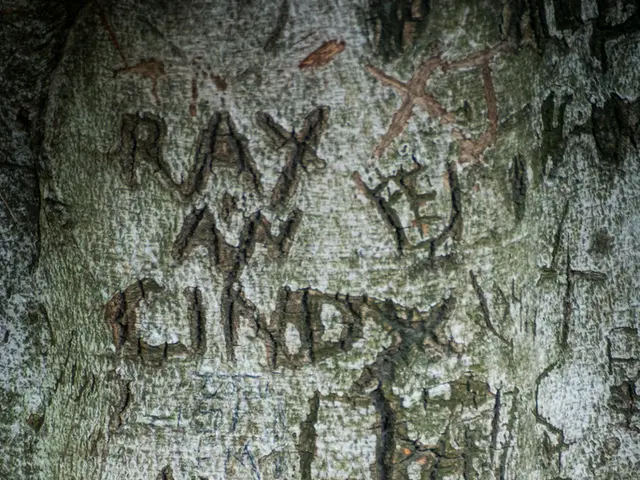Techniques for producing authentic landscape backdrops in concept art with Photoshop and Blender
Edward, a concept artist at Flix Interactive, specializing in video games, has a meticulous yet innovative approach to creating detailed personal projects. Here's a step-by-step breakdown of his process:
Initial Idea and Thumbnail Sketches
Edward begins by brainstorming ideas and creating quick, rough sketches, or thumbnails, to explore various compositions and concepts. This broad approach helps him avoid getting stuck early on.
Blocking and Layout
For projects involving environments or scenes, Edward builds a basic 3D blockout or creates a 2D layout to frame the scene and plan camera placement, lighting, and focal points. This flexible step allows for easy adjustments during the design process.
Refining the Linework and Values
Edward then creates a clean line sketch, solidifying the design's core elements. He establishes a simplified value key, using 2-3 distinct value groups to separate foreground, middle ground, and background clearly. This aids in lighting and depth perception.
Color Key and Tone
Next, Edward develops a color palette that supports the scene's mood and composition. He introduces color variation and shadow placement to enhance tone, often starting with simple triadic or complementary schemes.
Adding Details and Textures
Edward focuses on small details that bring realism or character to the scene. He uses software features like noise textures, bloom, glare, and subtle lens effects to make the art feel more photographic and immersive.
Incorporating a Human Element
To add life and scale to the scenes, Edward includes humans or characters, subtly conveying stories or emotions that connect with viewers. He uses poses or facial expressions that reflect emotions and narrative connection.
Post-Processing and Polish
Finally, Edward uses tools like Photoshop to add finishing touches, such as screen textures, light adjustments (fog, lens flares, sharpening key areas), and color grading to unify the piece.
Tips for Capturing Small Details
- Work at higher resolutions and then scale down for crispness while maintaining detail.
- Use layers to separate details, allowing iterative refinement without losing foundational work.
- Employ specialized brushes or shader effects to imitate textures like dirt, grime, foliage, or fabric folds.
Avoiding Getting Stuck
- Break down the project into stages (thumbnail, blocking, key poses, details) to maintain momentum and prevent overwhelm.
- Use rough blocking or thumbnails to quickly test ideas before committing to detailed work.
- Take breaks, seek feedback, or shift to different parts of the project to stay fresh.
In sum, Edward's approach involves structured ideation, progressive refinement of values and color, thoughtful addition of fine details and human elements, and iterative polishing—all supported by digital tools to simulate realistic textures and lighting effects, while managing workflow to stay productive and inspired. This method balances creativity and technical precision to create compelling, immersive concept art.








